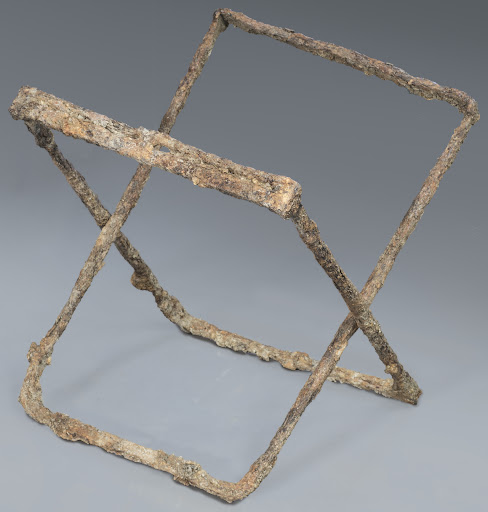In a remarkable archaeological discovery, an iron folding chair dating back 1,400 years has been unearthed in the Bavarian region of Middle Franconia. This extremely rare find, believed to be from around 600 A.D., is only the second such chair from the early Middle Ages ever found in Germany and one of fewer than 30 discovered across Europe. Even more astonishing, it is one of only six made of iron, highlighting its exceptional significance. This discovery provides a fascinating glimpse into the burial customs and social hierarchies of the time.
Unearthing of the Rare Iron Folding Chair
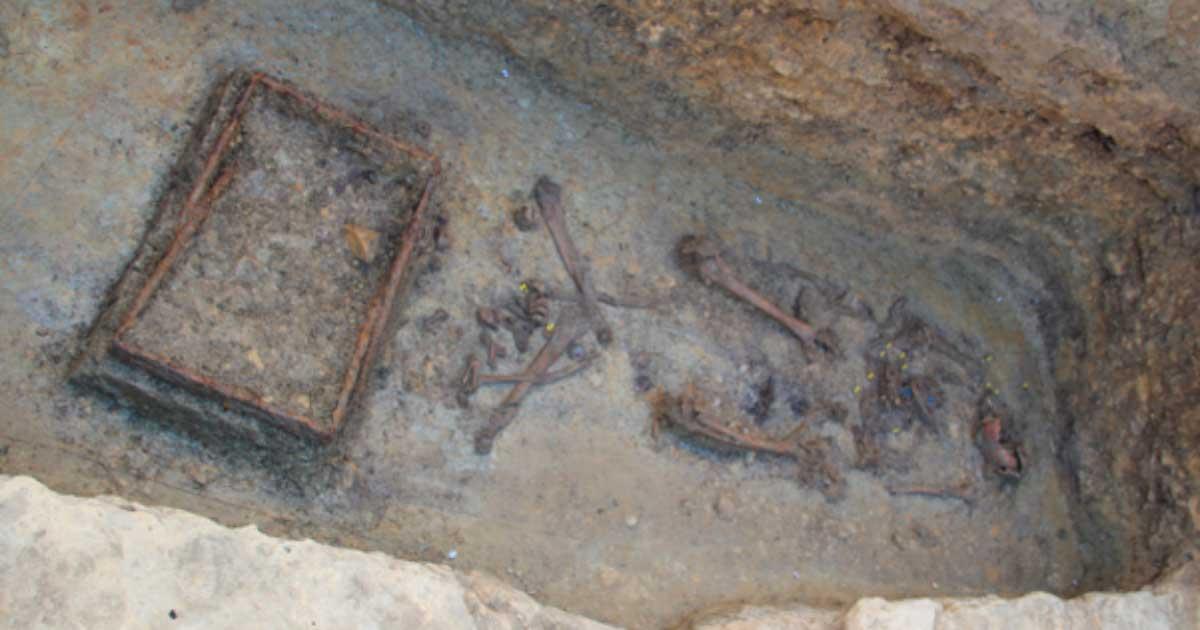
The iron folding chair was discovered during construction work for a business park in Middle Franconia. Archaeologists, who were called to the site, found the chair buried six and a half feet below the surface in the grave of an adult woman. Measuring 28 by 18 inches in its folded position, the chair was placed at the woman’s feet, accompanied by the bone of an animal, likely a cow’s rib, suggesting it was a meat offering. The remnants of paneling around the grave indicate that the woman was laid to rest in a covered wooden chamber, oriented from west to east.
Insights into the Woman’s Life and Status
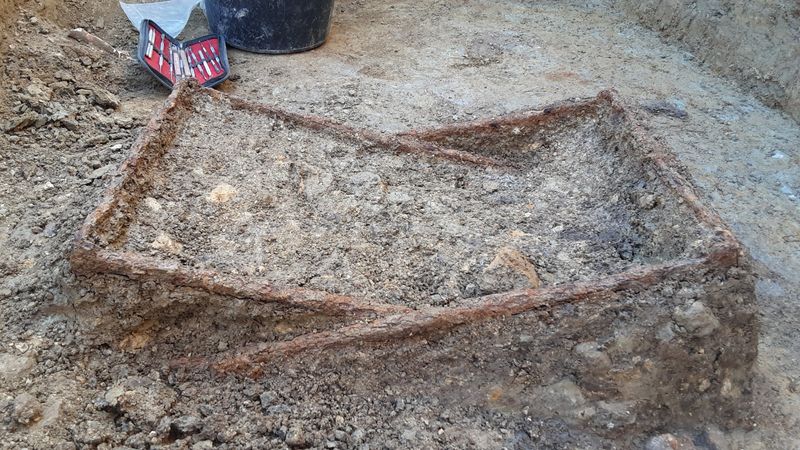
Initial osteological analysis suggests that the woman was between 40 and 50 years old at the time of her death. The presence of a necklace made of glass beads, a chatelaine attached to her belt, two bow brooches, a disc brooch, a spindle whorl, and a large millefiori glass bead, further indicates her high status. Folding chairs, such as the one found in her grave, have historically been interpreted as symbols of social status, political office, and even rulership.
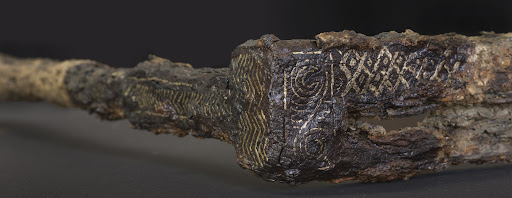
The X-shaped chair, known as the sella curulis, was a powerful emblem of authority in ancient Rome, with its origins traceable back to Pharaonic Egypt. Interestingly, almost all of the 29 early medieval folding chairs discovered in Europe have been found in the graves of women, raising intriguing questions about the roles and significance of women in these societies.
Discovery of a Second Grave
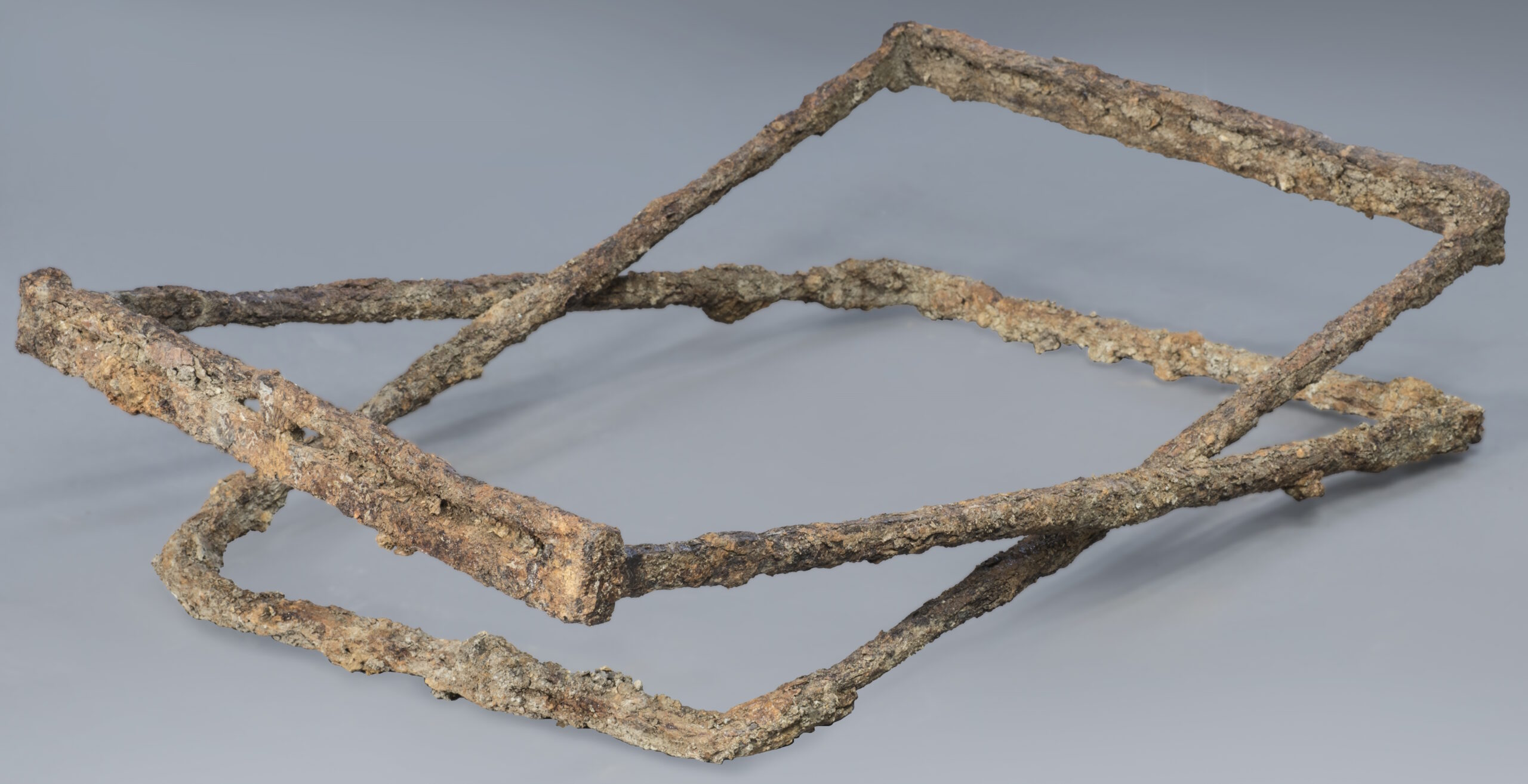
Adjacent to the woman’s grave, archaeologists discovered a second grave in a parallel orientation. This grave belonged to an adult male, who was also buried with a rich array of grave goods, including a full set of weapons (a lance, shield, and spatha sword), a bone comb, and a belt with a pouch and a bronze buckle. The presence of such valuable items in both graves suggests that these individuals were of considerable importance within their community.
Preservation and Further Study of the Iron Chair
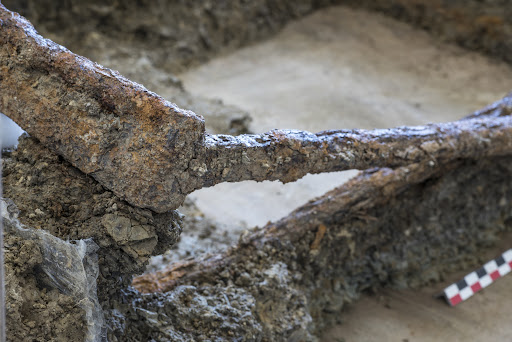
To ensure the preservation of the iron chair, it was carefully removed from the grave within a soil block. The chair is now being excavated at the restoration workshops of the Bavarian State Office for the Preservation of Monuments near Bamberg. X-rays will be used to map out the excavation process and assess the chair’s condition before it is fully exposed to the air. This meticulous approach will allow archaeologists to gain further insights into the construction and use of the chair, shedding light on its significance within early medieval society.
Conclusion
The discovery of the 1,400-year-old iron folding chair in Bavaria is a significant archaeological find that provides valuable insights into the burial practices and social hierarchies of the early Middle Ages. The rarity of such chairs, especially those made of iron, coupled with their association with high status and possibly political power, underscores the importance of this find. As archaeologists continue to study the chair and the surrounding graves, we can expect to learn even more about the lives and customs of the people who lived in this region over a millennium ago.
